Robby the Robot
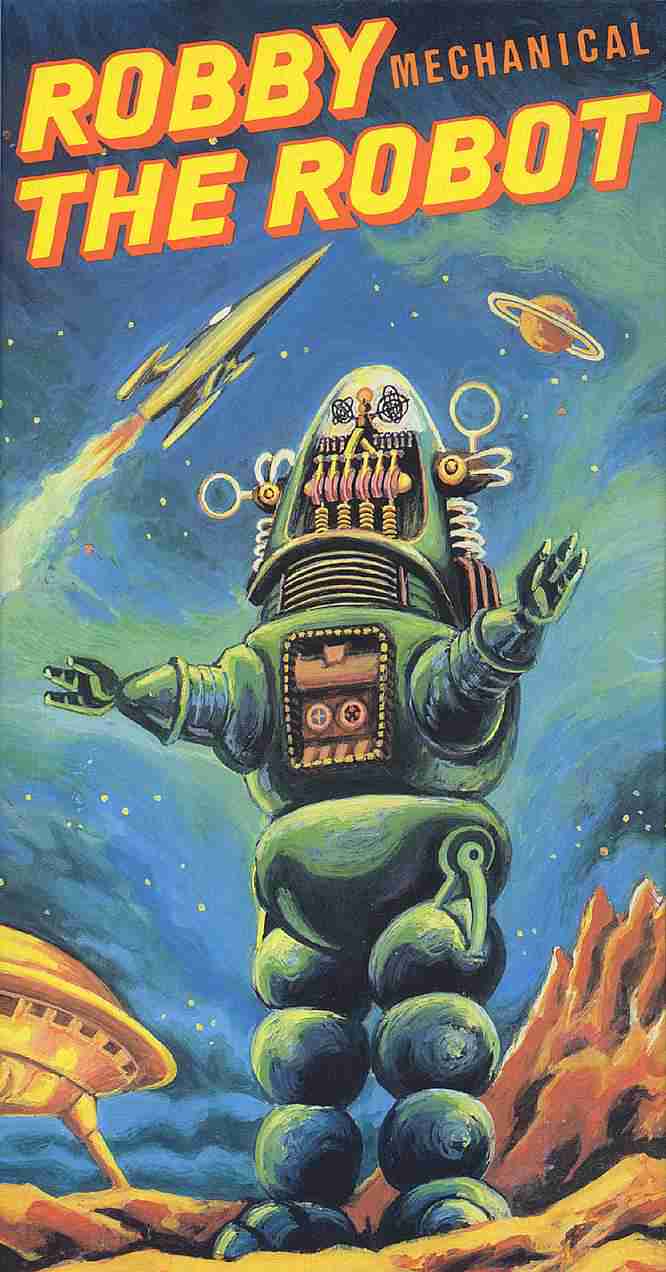
Robby the Robot : Forbidden Planet
Robby the Robot is decidedly one of the most popular sci-fi icons of all time, Robby the Robot was more than just an assemblage of tin parts. He had real personality, he had real character and audiences up to this day are still entranced by that very first moment they saw him onscreen. A robot with a decidedly authoritative yet humorously witty demeanor, part protector and part food processor, nobody had ever seen anything like Robby before.
Far from the image presented in the film’s poster, in which an evil-looking Robby is shown with a seemingly lifeless Ann Francis in his arms, Robby was programmed by Dr. Morbius to obey the Three Laws of Robotics, as written in the book I, Robot by Isaac Asimov. These laws are that a robot may not injure a human being, a robot must obey human orders and a robot must protect its own existence. Dr. Morbius also built Robby to serve and help mankind, which he does heroically and perhaps a little too literally, as Robby also cooks, cleans, sews, drives and manufactures booze.
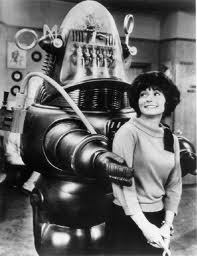
The film’s original screenplay, as written by Cyril Hume, describes Robby as having “no face — only a complicated arrangement of electronic gadgets which crackle and light-up at unexpected moments. In spite of his disproportioned arms and legs, he only very roughly suggests the human shape. His hands are tools, and various spare parts are neatly clipped to his body, back and front. He is able to rotate the upper part of his dome, and so seems to ‘face’ the person addressing him. A small radar antenna comes up out of Robby’s dome, and slowly rotates."
Robby is decidedly one of the most elaborate machines ever built for a film production. More than two months were needed to "thermo-form" plastics that were never before done and install all twenty-six hundred feet of electrical wiring necessary for Robby's spinning, flashing and moving parts. He has an analyzing box on his chest, in which he memorably pours whisky into in one of the film’s scenes. He has a head that could turn on a set of custom-made bearings, neon tubes that lights up when he talks, and wheels and buttons that continuously turn, twist and click whenever he comes out onscreen. Because was Robby was such a complicated and expensive technology at that time (he cost an estimated $100,000), only one Robby was ever built.
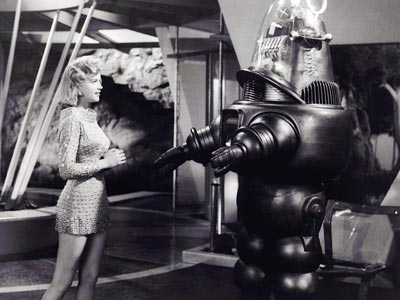
Robby wasn’t designed by any one specific artist. He was the product of a couple of thousand sketches and contributions from the film’s artists, including Irving Block, Arthur Lonergan and Arnold Gillespie. By the end of December 1954, Art Director Robert Kinoshita took all of those ideas and molded them into one basic design. He created a tiny wooden scale model that eventually became Robby the Robot, the 6-foot, 11-inch anthropomorphic automaton whose head sort of looked like a vacuum tube, and whose body sort of looked like a washing machine tub, perhaps because Robert Kinoshita used to design washing machines.
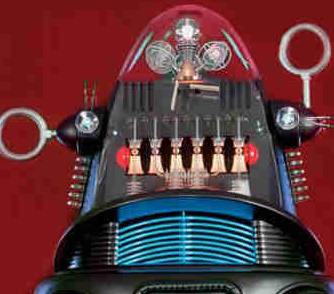
“One of the first things you do when you design a robot or monster,” Kinoshita recalled in an interview, “is to try to confuse the audience as to where you put the guy inside. It’s difficult to completely fool an audience because they know there is someone inside. But if you make an effort to confuse them it can work in your favor and make the whole creation more believable. Robby was designed so that the man inside could see out of the voice box below the glass head.” Although many people were fooled by Robby’s disproportionate form, he was controlled by Frankie Darro from inside, and his voice was provided by talented actor and announcer Marvin Miller, who gave Robby that distinctive, sophisticated wit so loved and remembered by audiences everywhere.
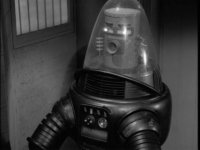
After his debut in Forbidden Planet, Robby made a number of appearances in films and TV programs from 1956 onward, just like any real actor. The suit was reused in a movie called The Invisible Boy.
He first came out in the 1956 MGM movie, Forbidden Planet, and is whole-handedly responsible for the cult status the movie enjoys. As Leslie Nielsen, who plays the young expedition commander in the film correctly declared, you can’t think of the film “Forbidden Planet” without thinking of Robbie the Robot. In the movie, Robby is created by Dr. Edward Morbius from plans left over by an alien computer system in the planet Altair IV. The result is a robot more advanced than any other machine created by man.
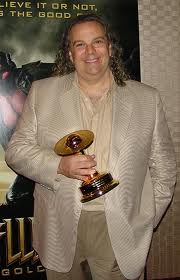
Twilight Zone, The Thin Man, The Addams family, Lost in Space, The Monkees, Mork and Mindy, and the Love Boat, among many others. His most recent appearances were in an AT&T commercial in 2006, and in digital and animated forms in Fallout 3, a video game, and in episodes of The Simpsons and Futurama.
Today, Robby the Robot is as still popular as he was when he first came out. Thanks to famous robot builders like Fred Barton, now fans can have their own
life-sized Robby the Robot, complete with state-of-the-art computer brain and audio animatronics. Fred Barton, aka the Robot Man, built his first full-size replica of Robby in 1975, from the original mold of Robby the Robot.
Click HERE to see Fred Barton's Robby the Robot Replicas
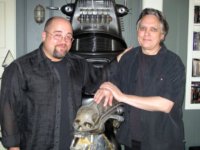
The real Robby is now owned by film director, Bill Malone, who is considerably the top Forbidden Planet collector in the world. In the photo is producer Frank H. Woodward with Bill Malone.
Definitely one of the most popular, most timeless robot icons ever to come out in history, Robby the Robot continues to capture and inspire the hearts and imaginations of people everywhere, whether here on earth or on Planet Altair.